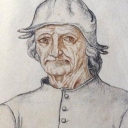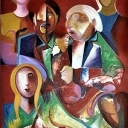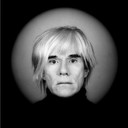Hieronymus Bosch spent much of his life in the Dutch town of s'Hertogenbosch, after which he was named. This town was outside the mainstream of Dutch Art of this time, which lends credence to the belief that Bosch led a very secluded life. Few facts exist concerning other aspects of his life except that it is known he married one of the wealthiest heiresses in the Netherlands and died at the age of sixty in 1516.
Bosch's art contains images that draw from religious symbolism, fantasy, nightmare and folk legend. The roots of modern movements, particularly Surrealism can be seen in his many involved and complicated works. The fact that none of his paintings, of which about forty survive, is dated, makes it very difficult to trace his artistic development and add to the mystery that surrounds him as an artist. It is however, through his art, that we must learn about the man.
His pictures follow a regular form clearly illustrating the tensions of the times. Bosch was quite obsessed with portraying the sins of men and his vision of the punishments for and consequences of such actions. In The Garden of Earthly Delights we see mankind being tempted to indulge in excessive behaviours and the resultant punishment with Bosch's own vision of hell. It is indeed a nightmare with bird-like creatures devouring sinners and digesting them into a pitch black pit where they are condemned to serve the darker forces.
The Ship of Fools follows a similar theme. The occupants of the vessel indulge in a multitude of sins, and while clearly their fate is unenviable there are those who would take their place lurking beneath in the murky waters.
Bosch's fortunate marriage afforded him a freedom to imagine and paint in his unusual and unconventional style which was not open to many of the artists of his time. He had no need for patronage and was therefore unconstrained by the wishes of others in his choice of, and approach, to subject matter.
In his lifetime Bosch inspired many imitators, his influence rapidly spread through prints. Bruegel, however, was one artist who was able to incorporate Bosch's imagery into his own vision. Even after his death he remained popular in many quarters with Phillip II of Spain being one avid collector of his paintings.
+
https://en.wikipedia.org/wiki/Hieronymus_Bosch
Hieronymus Bosch (1450 - 1516)
-
René Magritte47 Photos
-
ANTONIO PESSOA - Plastic Artist3 Photos
-
PREVIOUS BLOG (images)137 Photos
-
Jean-Michel Basquiat40 Photos
-
Andy Warhol43 Photos
Description
Hieronymus Bosch spent much of his life in the Dutch town of s'Hertogenbosch, after which he was named. This town was outside the mainstream of Dutch Art of this time, which lends credence to the belief that Bosch led a very secluded life. Few facts exist concerning other aspects of his life...
Comments
Photos
No photos to display






















